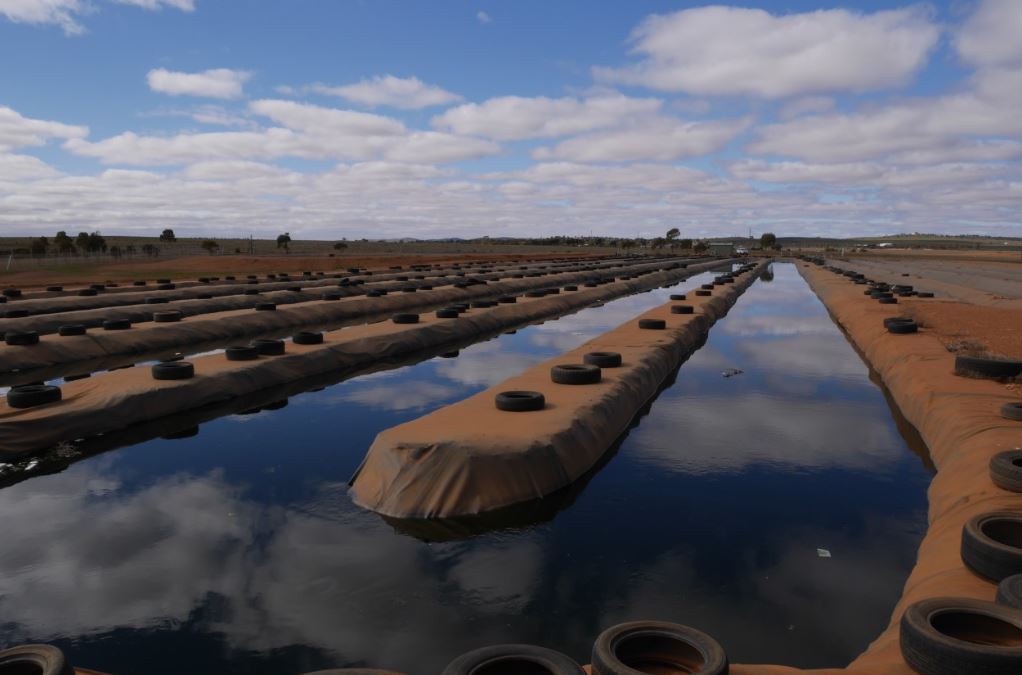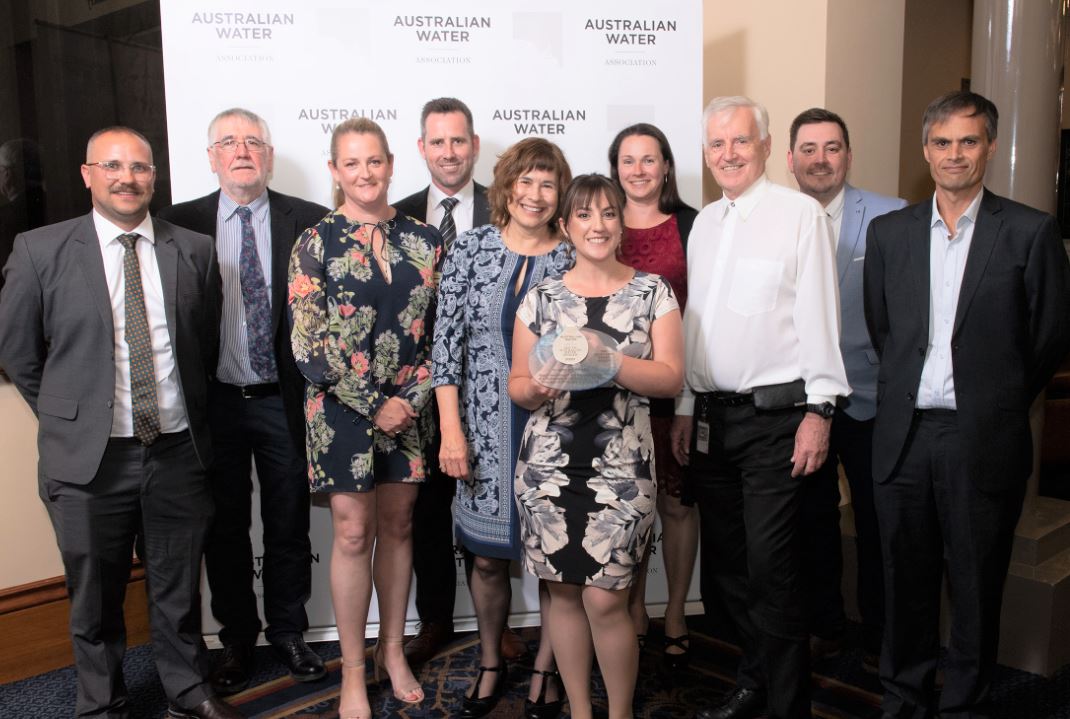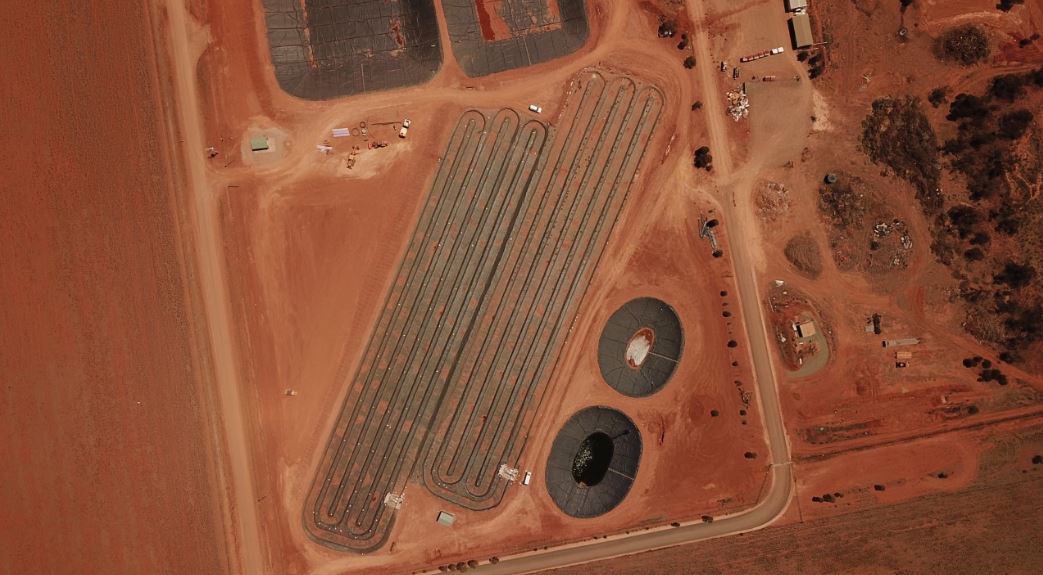
Flinders environmental health research is behind a successful wastewater treatment project in rural South Australia which is leading the way in sustainable water reuse, energy savings – and now in the quest to monitor for COVID-19 in the community.
The large-scale, innovative high rate algal pond system (HRAP) for treating wastewater, introduced at Peterborough to treat wastewater from 1800 people plus an abattoir is being used as part of the Collaboration on Sewage Surveillance of SARS-CoV-2, a national initiative to detect and monitor the presence of the virus that causes COVID-19 and its persistence in the Australian sewerage network to provide information on where it is present in the population.
The Rapid Development and Implementation of a Wastewater Surveillance Tool for the Detection of SARS-CoV-2 (COVID-19) project, led by SA Water and Water Research Australia, this month took out the Australian Water Association (AWA) State Research and Development Excellence Award.
Lead researcher Flinders Professor Howard Fallowfield says the Peterborough facility, which has been processing sewage and wastewater from the district for more than a year, is in a strategic location on the north-south Barrier Highway to monitor any presence of the disease, including in any travellers between SA and interstate.
A Flinders University COVID-19 research grant enabled the Flinders University team, also including Associate Professor Kirstin Ross, Dr Harriet Whiley and colleague Professor Melissa Brown, to support the national initiative.
While Flinders University continues to conduct evaluation on the new plant, and other SA wastewater HRAP at Kingston on Murray, the subsequent scientific validation of water quality and energy use makes the system ideal for remote towns in arid and semi-arid location around the world, says Professor Howard Fallowfield who has led the research for more than 10 years.
He says the collaboration with federal and local government groups, including the SA Local Government Association, is a good example of research helping with the design and construction of the HRAPs and monitoring systems making a difference in real-world applications.
"The new system has very low energy requirements, it is robust, and its operating system can be accessed remotely, from our offices in Flinders University - which is what we have been doing for the past few years at the Kingston on Murray site."
Where the Kingston on Murray ponds were 250m2, Peterborough has two 5000m2 meandering channels that are designed to treat 470,000L of wastewater per day - the largest system of its type operating in Australia and 40 percent cheaper to create than other wastewater treatment plans for Peterborough.

It also won the SA AWA Infrastructure Project Innovation award in November 2019.
"This is a perfect example of communities benefitting from research that makes things better," says Professor Fallowfield. "Ultimately, this is saving lives. It's a big public health issue, separating people from faeces and possible disease.
"Projects such as this provide essential exposure for our research students to work in the real world, where they can make things better for communities. And now we will be able to undertake even more research on the bigger treatment site, to explore more outcomes for the system that will be of international interest."
Peterborough, which had no sewage system, was experiencing significant health troubles via its septic tank problems, with many of the town's 1800 people concerned about disease, mosquitos and odours of existing septic tanks on individual properties. Local plumbers are now working at capacity to connect homes to the new system.
The new system is also of vital importance to Samex Peterborough Abattoir, a significant employer in the town, having grown from 14 to 70 staff since SAMEX purchased the business in 2012. Its focus is processing feral camels that have been trapped by Indigenous Australian hunters, which has great potential for growth - although this had been stalled due to the abattoir's limited access to an adequate wastewater treatment system.
A useful by-product of the HRAP is the reuse of treated water for irrigation in an area with limited water resources. This will mean easier access to growing green vegetables and fresh food, which is difficult for many Australian rural communities in arid areas.

The innovative new system could even put Peterborough on the map as an international trade demonstration site. "Weirdly, this plant could be a tourism attraction, because it has such wide-reaching global implications," says Professor Fallowfield. "This system has the potential to dramatically increase the availability of water for reuse in rural communities.
"These sustainable, low-energy systems are cost effective to run, and the capital cost of construction is also about 40 per cent of the previous system for effluent-only schemes, and marginally higher for blackwater schemes."
The effectiveness of this technology has been confirmed by various studies, with the HRAP system smaller, faster and more effective at cleaning wastewater, creating the potential to reclaim more water for alternative use.
"The study demonstrated that high rate algal ponds are a viable alternative to waste stabilisation ponds for the treatment of wastewater in rural South Australian communities and elsewhere," says Professor Fallowfield.
"While a conventional system takes 66 days to do the treatment, we can to it in between five and 10 days. Its ability to remove pathogens is equal to, or better than, existing wastewater systems."
He adds that by providing more reclaimed water to irrigate local woodlots, the new system is a winner, both environmentally and economically.







